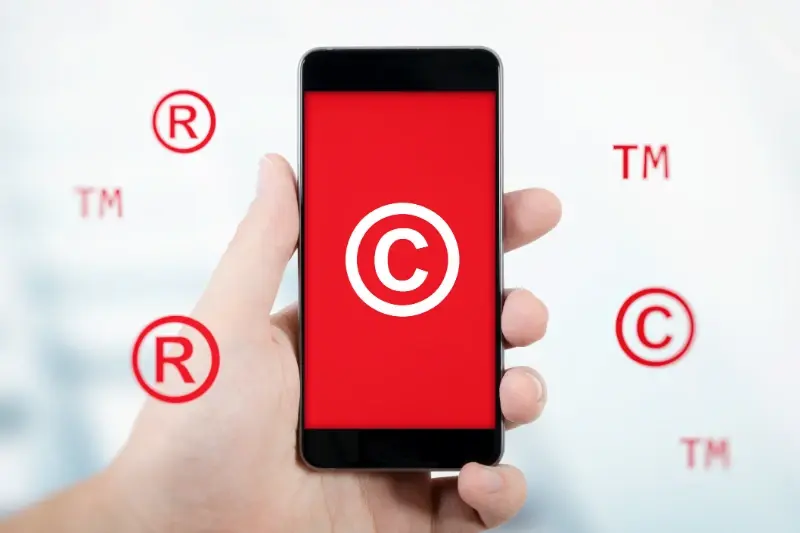Why Your App Needs Insurance (even If You Think It Doesn't)
Every minute, thousands of mobile apps face threats that could wipe them out completely—data breaches, lawsuits, server crashes, and security vulnerabilities that appear from nowhere. Most app owners think their biggest worry is getting downloads or keeping users engaged, but the real danger lies in the risks they can't see coming. These hidden threats can destroy years of work and investment in a single day.
After working with countless app projects over the years, I've watched brilliant ideas crumble not because they were bad products, but because their creators never considered what would happen when things went wrong. And things always go wrong eventually. A user's personal data gets stolen, someone claims your app infringes their patent, or a coding error causes financial losses—suddenly you're facing legal bills that could bankrupt your business.
The apps that survive aren't necessarily the best ones—they're the ones that planned for disaster before disaster struck.
Business protection for mobile apps isn't just about ticking boxes or keeping lawyers happy; it's about smart risk management that lets you focus on what you do best whilst knowing you're covered when the unexpected happens. Whether you're launching your first app or managing a portfolio of successful products, understanding how to protect your digital assets could be the difference between thriving and disappearing overnight.
What Is App Insurance And Why Should You Care
App insurance is exactly what it sounds like—protection for your mobile application against things that could go wrong. Just like you'd insure your car or your house, you can get cover for your app that helps when disasters strike.
Most app owners don't even know this exists (I certainly didn't when I started out!) but it's becoming more important as apps handle sensitive data, process payments, and store personal information. The risks are real and they're growing.
What Does App Insurance Actually Cover
There are different types of cover depending on what your app does. Professional indemnity insurance protects you if your app causes financial loss to users—say your fitness app gives dodgy health advice or your finance app miscalculates something important. Cyber liability insurance kicks in when hackers steal user data or your servers get attacked.
Public liability cover helps if your app causes injury (yes, that's a thing—people walking into traffic whilst using apps) and errors and omissions insurance protects against mistakes in your code that cause problems.
You might think "my app is simple, what could go wrong?" but I've seen apps face lawsuits over the smallest things. Data breaches, accessibility issues, even copyright claims can cost thousands to defend against.
The Hidden Risks That Could Kill Your App Overnight
After eight years of building mobile apps, I've seen businesses go from hero to zero faster than you can say "data breach." The risks facing your app aren't just technical glitches or server crashes—they're the kind of problems that can destroy your reputation and drain your bank account before you've even had your morning coffee.
Data breaches top the list of nightmare scenarios. One security vulnerability and suddenly you're dealing with angry customers, regulatory fines, and lawyers knocking at your door. But that's just the beginning. Copyright infringement claims can appear out of nowhere—maybe your developer used some code they shouldn't have, or your app accidentally violates someone's patent.
Then there's the people side of things. What happens if a user gets injured while using your fitness app? Or claims your meditation app made their anxiety worse? These liability issues might sound far-fetched, but they're happening to real businesses every day.
Keep detailed records of all your app's development decisions, security measures, and user communications. This documentation becomes invaluable if you ever face a legal challenge.
The Most Common Threats
- Data breaches and privacy violations
- Copyright and patent infringement claims
- User liability and personal injury claims
- Professional negligence accusations
- Employment disputes with your development team
- Cyber attacks and ransomware
The scary part? Most of these risks exist whether your app has ten users or ten million. Size doesn't matter when it comes to business protection and risk management—what matters is being prepared.
Real Stories Of Apps That Wished They Had Protection
I've watched brilliant apps crumble overnight because their creators thought insurance was just another expense they could skip. One fitness app I knew had built up 50,000 users over two years—then got hit with a data breach lawsuit that cost them £180,000. They had to shut down because they couldn't afford the legal fees.
Another story that sticks with me is a food delivery app that got sued by a customer who claimed their driver damaged their property. The legal battle dragged on for months, costing thousands in solicitor fees alone. The app owners had to sell their house to keep the business running whilst fighting the case.
When Success Becomes a Target
There's also the dating app that became too successful for its own good. They had patent trolls come after them claiming their matching algorithm infringed on existing patents. Without proper intellectual property protection, they spent nearly £100,000 defending themselves—money that could have been used to grow the business instead.
The worst part? Most of these disasters could have been prevented with the right insurance coverage costing just a few hundred pounds per year. These weren't bad apps or careless developers; they were smart people who simply didn't think they needed protection until it was too late.
Types Of Insurance Coverage Every App Owner Should Know About
Right, let's get into the nitty-gritty of what types of coverage are actually available for your mobile app. I'll be honest—when I first started working with app owners, many of them had no clue these options even existed. The insurance world can be a bit overwhelming, but there are really just a few key types you need to understand.
Professional Indemnity Insurance
This is your bread and butter coverage. Professional indemnity protects you when someone claims your app caused them financial loss or didn't work as promised. Say your fitness app miscalculates calories and a user claims it affected their health goals—this coverage has your back. It's particularly important for apps that handle sensitive data or provide advice.
Cyber Liability Insurance
Given how much personal data most apps collect these days, cyber liability insurance is becoming non-negotiable. This covers you for data breaches, hacking incidents, and privacy violations. If someone gets into your user database and steals personal information, you're looking at potentially massive costs for notifications, credit monitoring, and legal fees.
The average cost of a data breach for small businesses is now over £3 million, and that's just the direct costs
There's also general liability insurance (covers basic business risks), errors and omissions insurance (similar to professional indemnity), and business interruption insurance (covers lost income if your app goes down). Most insurers now offer packages specifically designed for tech businesses, which makes the whole process much simpler than it used to be.
How Much App Insurance Actually Costs And What Affects The Price
Right, let's talk money—because that's what you're really wondering about, isn't it? App insurance isn't going to break the bank, but it's not pocket change either. Most policies start around £500-£1,000 annually for basic coverage on smaller apps, whilst comprehensive protection for larger applications can run into several thousand pounds per year.
What Makes Your Premium Go Up Or Down
The price you'll pay depends on quite a few factors. Your app's revenue is the big one—insurers assume higher-earning apps face bigger risks and potential claims. They'll also look at what type of app you've built; a simple utility app will cost less to insure than something handling payments or personal data.
User numbers matter too. An app with 10,000 users presents different risks than one with 10 million. The coverage limits you choose obviously affect the price—more protection costs more money. Your claims history (if you have one) and the specific risks your app faces will also influence the final figure.
Getting The Best Deal
Don't just accept the first quote you receive. Shop around, compare coverage levels, and be honest about your app's risks. Some insurers specialise in tech companies and understand apps better than traditional business insurers. The cheapest option isn't always the best—you want coverage that actually protects you when things go wrong.
When To Get Insurance And Common Mistakes To Avoid
The best time to get insurance for your mobile app is before you launch—not after something goes wrong. I know it sounds obvious, but you'd be surprised how many app owners think they can wait until their app gets popular before worrying about business protection. That's like waiting for a storm to hit before fixing your roof!
Most insurance providers need time to assess your app and set up coverage properly. This process can take weeks, sometimes months depending on what type of app you're building. If you're dealing with sensitive user data or payments, expect even longer wait times as insurers will want to review your security measures thoroughly.
The Biggest Mistakes App Owners Make
The most common mistake I see is assuming that basic business insurance covers everything. It doesn't. Standard policies rarely include cyber liability or professional indemnity—two things that are absolutely critical for risk management in the app world. Another big mistake is underestimating how much coverage you actually need; many developers go for the cheapest option and end up severely underinsured.
Start the insurance application process at least 6-8 weeks before your planned launch date. This gives you plenty of time to sort out any issues without delaying your release.
- Don't wait until after launch to start looking for coverage
- Never assume your existing business insurance covers app-specific risks
- Always read the fine print about what's excluded from your policy
- Don't underestimate the coverage amounts you might need
- Avoid choosing insurance based solely on price
Remember that many of these issues stem from common startup mistakes that can be avoided with proper planning. Getting your development team to implement proper code reviews and following best practices for app development can reduce many risks from the start.
Conclusion
Look, I get it—nobody likes paying for insurance until they actually need it. But after seeing what happens when apps get hit with cyber attacks, legal claims, or data breaches, I can tell you that app insurance isn't just a nice-to-have anymore. It's becoming a business necessity.
The mobile app industry moves fast, and risks are everywhere. One data breach can cost hundreds of thousands of pounds; one lawsuit can shut down years of hard work. The stories we've covered show exactly what happens when app owners think "it won't happen to me"—spoiler alert: it does happen, and it's expensive.
Getting the right coverage doesn't have to break the bank either. Professional indemnity insurance might cost you a few hundred pounds a year, whilst cyber liability coverage scales with your user base. Compare that to the potential costs of going without protection, and the maths becomes pretty clear.
My advice? Don't wait until you're processing thousands of transactions or storing sensitive user data. Get basic coverage early, then expand it as your app grows. Your future self will thank you for thinking ahead—trust me on this one.
Share this
Subscribe To Our Blog
You May Also Like
These Related Stories

5 Intellectual Property Mistakes That Could Kill Your App Business

Enterprise App Security Threats Your Business Can't Ignore





